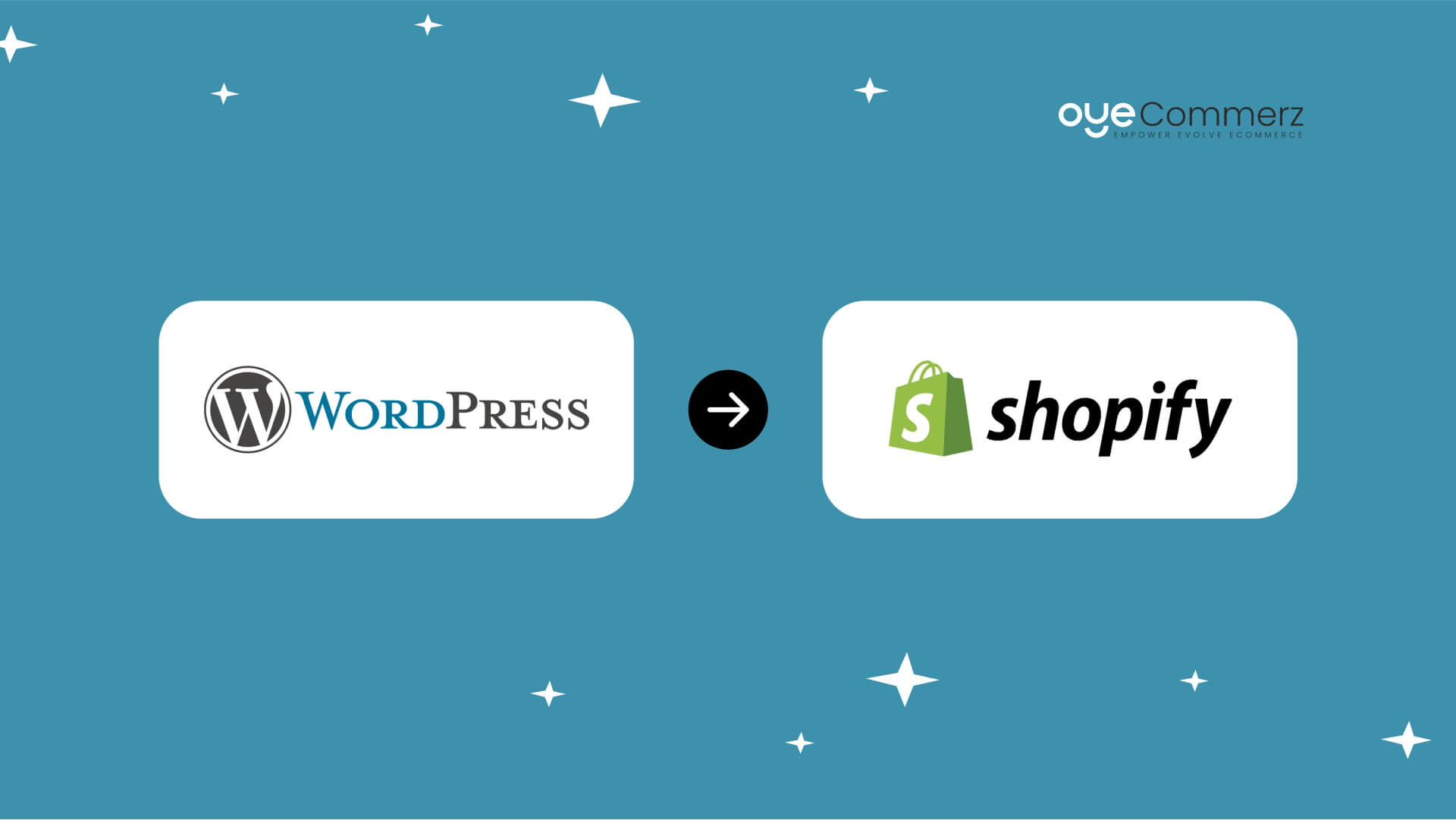Transitioning from WordPress to Shopify marks an exciting step in optimizing your e-commerce processes. As businesses expand, choosing a solution that aligns with growth potential, user experience, and flexibility is essential. Shopify has emerged as a favorite for online merchants, providing unmatched adaptability, security, and user-friendliness. In this guide, we will delve into the transformative impact of this migration, discuss the advantages, and share actionable steps to facilitate a seamless move.
1. Why Migrate from WP to Shopify?
The combination of WordPress and WooCommerce, continues to support countless e-commerce platforms. However, as businesses expand, issues like plugin dependency, data risks, and complex setups often obstruct progress. Shopify, specifically created for digital retail, addresses these issues with an comprehensive, intuitive platform. Statistics back this transition—Shopify hosts over 4.4 million stores worldwide, with a documented 10% increase in sales conversion rates for many businesses after migration.
2. Shopify's Advantages for Thriving Online Stores
Shopify’s powerful platform caters for scaling brands. Its notable benefits include:
- Effortless Design Flexibility: Shopify offers over 80 professionally designed themes.
- Built-in Features: Features like Shopify Payments and integrated SEO save time and effort.
- International Expansion: Multi-currency support and regional customization empower brands to reach global markets.
Additionally, Shopify delivers an uptime rate of 99.98%, guaranteeing your website remains accessible.
3. Preparing for WP to Shopify Migration
Prior to starting the migration process, assess your current store. Review inventory details, customer details, and SEO performance. Tools like Shopify’s Migration Kit or third-party solutions can simplify this process. Develop a comprehensive plan, ensuring all resources—product descriptions, media files, and blog content—are optimized for transfer.
4. The Importance of Accurate Data Migration
Transferring your data is a cornerstone of a smooth transition. When migrating from WP to Shopify, prioritize:
- Inventory Details: SKU, descriptions, and groupings.
- Client Information: Emails, order history, and custom fields.
- SEO Optimization: Preserve meta tags, URLs, and redirects to avoid SEO losses.
Leverage tools such as LitExtension to streamline data transfer while reducing mistakes.
5. Customizing Your Shopify Store
After the move, customizing your Shopify store helps it aligns with your business identity. Utilize Shopify’s intuitive page builder to design pages effortlessly. Shopify's templates are optimized for all devices, ensuring a seamless user experience across devices—a key point, given 74% of online shopping comes from mobile users. Shopify advanced features
6. How to Protect Your SEO Rankings When Switching Platforms
Search engine optimization is crucial for preserving your visibility during migration. Shopify excels in SEO with clean URL structures, built-in optimization tools, and smooth content management. Ensure:
- Set up URL forwarding for existing links.
- Enhance updated content with keyword-rich content.
- Use Shopify's apps Plug in SEO to track analytics after the switch.
7. Essential Tests After Migrating to Shopify
Once the migration is complete, conduct thorough testing.
Review: - Page load times (Shopify delivers faster speeds compared to WP).
- Functionality of payment gateways and checkout processes.
- Adaptability across devices.
Testing guarantees your store provides a smooth shopping experience from day one.
8. Case Study of a Successful Migration
An example of effective platform switching is Gymshark, a sportswear company that moved to Shopify. After the switch, the company experienced a 60% boost in mobile sales and significantly lowered site downtime. This highlights the potential of Shopify in driving online business success.
9. Overcoming Common Migration Issues
Migration is not without obstacles, such as data integrity and reconfiguring custom functionalities. However, Shopify’s robust support and external professionals simplify the Shopify migration experts process. Partnering with experienced Shopify developers ensures a trouble-free transition.
10. Starting Your Journey with Shopify
Migrating from WordPress to Shopify marks a strategic approach to e-commerce. By focusing on growth, streamlining operations, and enhancing the customer experience, Shopify empowers businesses to succeed in challenging industries.
Conclusion
Transitioning from WP to Shopify is a strategic move that can greatly enhance your online business performance. With a robust migration plan, the appropriate resources, and professional guidance, you can unlock new growth opportunities.
Excited to start the journey? Reach out today to learn how our Shopify migration services can transform your e-commerce platform. Contact us now, or ask yourself: Can your business afford to miss out on Shopify’s growth potential?
